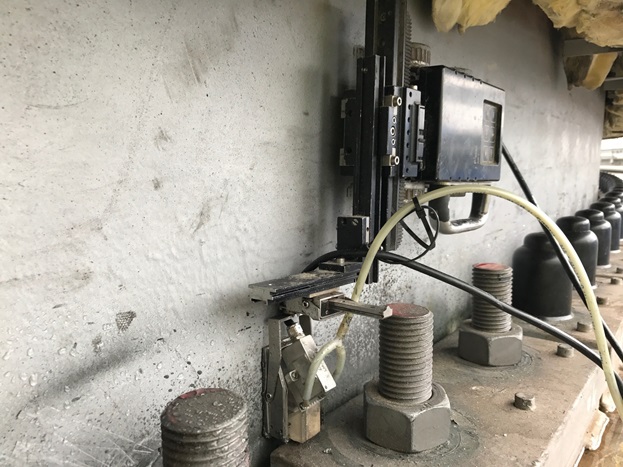Just How Tank Welding Inspection Avoids Future Structural Failings
An In-depth Review of Tank Welding Assessment Requirements and Methodologies for Improved Weld Top Quality and Efficiency
The value of welding evaluation standards in the manufacturing of containers can not be overemphasized, as they act as the backbone for guaranteeing weld integrity and operational reliability. Various examination methods, consisting of visual evaluations and advanced non-destructive testing techniques, are crucial in identifying possible flaws that could compromise efficiency. Additionally, adhering to regulative standards not only boosts weld high quality but additionally alleviates the risk of pricey failures. As we discover the nuances of these techniques, it becomes crucial to consider exactly how a methodical technique can transform existing practices and cause considerable improvements in outcomes.
Importance of Welding Inspection Requirements

Welding examination criteria encompass an array of criteria, consisting of material specifications, welding treatments, and qualifications of personnel associated with the welding procedure. By applying these standards, organizations can systematically recognize and remedy possible flaws, thereby reducing the chance of costly repairs or devastating failures. Extensive evaluation techniques foster a society of responsibility and precision, motivating welders to maintain high levels of workmanship.

Usual Welding Assessment Techniques


Ultrasonic Examining (UT) is another widespread method, using high-frequency acoustic waves to identify interior imperfections that might not be noticeable externally. This approach is specifically reliable for recognizing spaces or additions within the weld metal. Magnetic Fragment Evaluating (MT) is additionally extensively used, especially for ferromagnetic products, as it reveals surface area and near-surface flaws with the application of electromagnetic fields and ferrous bits.
Additionally, Fluid Penetrant Testing (PT) finds surface-breaking problems by applying a penetrant to the weld and after that using a programmer to attract out the penetrant. Each of these strategies adds to a comprehensive evaluation method, ensuring that welds fulfill the read review rigorous quality criteria required in storage tank construction.
Regulative Requirements and Compliance
Regulatory requirements and conformity are vital parts in making sure the safety and reliability of welded frameworks in tank building and construction - Tank Welding Inspection. These standards serve to develop minimum demands for product buildings, welding treatments, and evaluation practices, consequently reducing the danger of architectural failures and enhancing general efficiency
Trick organizations, such as the American Culture of Mechanical Designers (ASME) and the American Welding Culture (AWS), offer guidelines that are extensively adopted in the sector. Conformity with these requirements not just ensures adherence to finest practices yet likewise satisfies lawful and legal responsibilities, securing the rate of interests of stakeholders.
Governing bodies usually mandate adherence to particular codes, such as ASME Code Section IX for welding credentials and API 650 for bonded containers. These codes outline needs for welding strategies, credentials of personnel, and testing approaches to verify weld honesty.
Normal audits and examinations are crucial to keeping compliance, as they aid identify discrepancies from established standards. Non-compliance can result in substantial fines, job hold-ups, and click for source safety dangers. Hence, a robust understanding of governing standards and a commitment to compliance are extremely important in accomplishing high-quality and resilient bonded storage tank frameworks.
Non-Destructive Examining Approaches
How can the integrity of welded structures be guaranteed without causing damage? Non-destructive testing (NDT) approaches provide a durable remedy, enabling inspectors to evaluate weld top quality without visit homepage jeopardizing the product - Tank Welding Inspection. Among one of the most usual NDT strategies are ultrasonic testing (UT), radiographic testing (RT), magnetic bit screening (MT), and dye penetrant screening (PT)
Radiographic testing includes passing X-rays or gamma rays via the weld, creating pictures that expose architectural defects such as cracks or gaps. This approach is indispensable for evaluating the stability of complicated welds.
Magnetic fragment screening is matched for ferromagnetic materials, where electromagnetic fields disclose surface area and near-surface suspensions. Color penetrant testing makes use of a fluid dye to highlight surface-breaking flaws, making it a reliable approach for non-porous materials.
Each of these NDT techniques has distinctive benefits, enabling detailed evaluations tailored to details products and welding procedures. By executing these techniques, sectors can make sure the integrity and security of welded structures, eventually improving general performance.
Enhancing Weld Top Quality With Evaluation
Efficient assessment plays an important function in enhancing weld quality, offering as an essential checkpoint in the fabrication process. By determining potential issues early, assessments reduce the threat of jeopardized structural stability and ensure compliance with market requirements. Using a combination of aesthetic assessments, non-destructive screening (NDT) techniques, and mechanical evaluations, inspectors can spot concerns such as porosity, fractures, and incomplete fusion.
Executing a robust assessment procedure not only enhances the overall top quality of welds however additionally fosters a society of liability amongst welders and producers. Normal training and qualification of examination personnel ensure that they are furnished with the needed skills to recognize and address possible troubles efficiently. This positive strategy reduces rework and connected expenses, inevitably adding to predict performance.
Additionally, extensive documents of evaluation searchings for offers valuable understandings right into repeating concerns, helping with constant renovation in welding methods. By leveraging sophisticated technologies, such as automated ultrasonic screening or digital radiography, weld quality can be improved via much more accurate assessments. Finally, a strenuous assessment procedure is indispensable in achieving premium welds, making certain safety, integrity, and longevity in tank manufacture.
Verdict
In final thought, the implementation of strenuous container welding examination criteria and techniques is important for making certain weld stability and efficiency. By utilizing a combination of visual evaluations, non-destructive screening approaches, and adherence to regulative standards, organizations can properly identify and alleviate possible flaws.